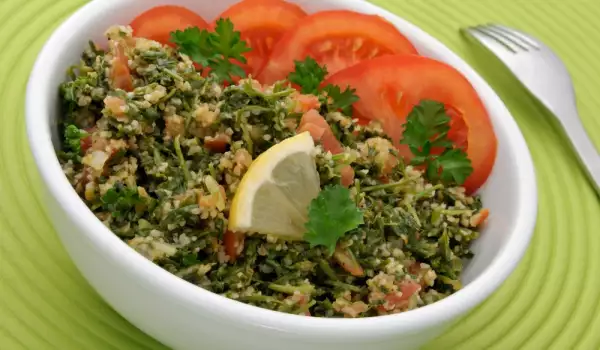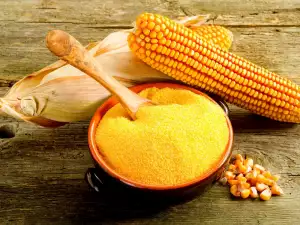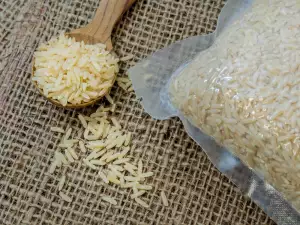Bulgur is a wholesome wheat food that comes from milled, dried and crushed grains, most often made from hard or white wheat. For quite a long time now, bulgur has been anchored in the culinary traditions of the Balkans, the Middle East and India. Relatively recently, in the past few decades, bulgur has become a part of the obsession with fully balanced diets in Western Europe and the United States.
Actually, bulgur arose from a practical standpoint. After it is steamed, dried and then crushed, it can be stored for a long time and can be cooked must faster than wheat. Furthermore, treating it thus preserves the nutritional value of bulgur wheat without losing valuable nutrients like protein.
Until five decades ago, bulgur was a major part in the daily menus in Europe. But then rice took its place, much like quinoa in South America. Today, however, bulgur and quinoa are rehabilitated - the desire to eat healthy has brought them back extensively to our daily menu. This is seen worldwide.
Composition of bulgur
Bulgur contains 76% carbohydrates, which is pretty high, but it contains a lot of fiber (18%) also, which slows its absorption, and therefore delays the absorption of carbohydrates and thus makes it useful (in small quantities up to 3 1/3 tbsp (50 g) per day) for weight loss diets. If you aim to lose weight, bulgur is a great source of carbohydrates and can be safely consumed as a substitute for white bread. The Glycemic Index of bulgur is 46. Compared to the same amount of unpolished rice, bulgur has more fiber and protein, higher levels of vitamins and minerals and a lower glycemic index.

Nutritional values per 2/5 cup (100 grams) of bulgur:
Calories: 342, Protein: 12.29 g, Carbohydrates: 75.87 g, Fat: 1.33 g, Fiber: 18.3 g
Minerals: Calcium: 35 mg, Iron: 2.46 mg, Magnesium: 164 mg, Phosphorus: 300 mg, Potassium: 410 mg, Sodium: 17 mg, Zinc: 1.93 mg, Copper: 0.335 mg, Manganese : 3.048 mg, Selenium: 2.3 mg.
Vitamins: Vitamin C: 0, Thiamin (B1): 0.232 mg, Riboflavin (B2): 0.115 mg, Niacin (B3): 5.114 mg, Pantothenic acid (B5): 1.045 mg, Vitamin B6: 0.342 mg
Folate (natural B9) (Folic acid is a synthetic vitamin B9): 27 mcg, Choline: 28 mg, Vitamin B12: 0, Vitamin A: 9 IU, Lutein and zeaxanthin: 220 mcg, Vitamin K: 1.9 mcg.
Amino Acids: Tryptophan: 190 mg, Threonine: 354 mg, Isoleucine: 455 mg, Leucine: 830 mg, Lysine: 339 mg, Methionine: 190 mg, Cystine: 285 mg, Phenylalanine: 580 mg, Tyrosine: 358 mg, Valine: 554 mg, Arginine: 575 mg, Histidine: 285 mg, Alanine: 436 mg, Aspartic acid: 630 mg, Glutamic acid: 3.878 g, Glycine: 495 mg, Proline: 1.275 g, Serine: 580 mg.
Selecting and storing bulgur
Bulgur is sold in bulk or packaged, usually in packs of 17.5 oz (500 g) or 2 lb (1 kg). The color is lighter or darker depending on the type and composition. There are 4 kinds - very small for Tabule Arab salad and meatballs, two medium-sized versions for stews and large. Coarse whole-grain bulgur is a healthy substitute for rice in sauerkraut wraps and stuffed peppers, for chicken or lamb stuffing, and in the preparation of gizzards.
When choosing bulgur, in addition to looking at the expiry date on the package, have a good look inside at the grains and see if there are rotten, moldy or moist in places. After opening the package, store bulgur in a closed container with a tightly sealed lid.
Culinary use of bulgur

Bulgur is embedded in traditional native cuisine and dishes such as stuffed lamb with bulgur or stuffed rabbit with bulgur are favorites of many of us. Bulgur can seamlessly replace rice or meat in your eating habits. Bulgur can be added to any dish or salad or even be eaten for breakfast, sweetened with a spoonful of honey, dried fruits and nuts without worrying that you are missing out on the important nutrients needed by your organism.
Bulgur goes well with all kinds of onions - shallots, white, garlic, leeks and various vegetables and root crops such as potatoes, carrots, parsnips, celery, etc. It is a wholesome food, playing a crucial role in traditional cuisine, mostly as a substitute for rice. It gives a unique taste to lamb dishes. With bulgur, you can even cook a delicious pie or cake. The recommended cooking ratio is 1:3 (1 part bulgur to 3 parts water). You can soak it in hot water or boil and drain.
There are soya meal and soy bulgur, which are a high protein supplement. They serve to improve the structure of the profile of bakery goods and increase their nutritional adequacy. They are also used in the preparation of fillings, for sprinkling, for making desserts with milk and starch, and improve the taste of the product.
Soy bulgur can increase moisture retention in bakery goods and maintain the freshness of the product. There is also a rice bulgur, which is soaked in water, quickly covered with a lid and allowed to swell, and can then be used for tabbouleh salad, stuffed peppers, etc.
Lamb with bulgur
lamb - 4.5 lb (2 kg), in portions
bulgur - 2 cups

rice - 1/2 cup
onions - 2 fresh sprigs
water - 6 cups
garlic - 2-3 fresh sprigs
lovage - 1 bunch
black pepper
paprika
salt

oil
Distribute the portioned lamb in an oven dish. Finely chop the onions and garlic and mix them with rice and bulgur and add them to the lamb in the dish. Cover with hot water and place the dish to be baked for about 2.5-3 hours on intense heat in the oven, under foil.
Classic Turkish pilaf with bulgur
bulgur - 1 cup coarse, wholegrain
chicken broth - 2 cups warm
onion - 1 head
green peppers - 1, coarsely chopped
tomatoes – 1 large, cut into cubes
leeks - 1 sprig
oil - 1 tsp
salt - to taste
Preparation: Heat the oil in a deep pan with a lid and cook the onion until transparent. Add the vegetables and pour in the broth. Once boiling, add in the bulgur, stir and lower the heat. Stew covered until ready and then flavor with spices. Serve the classic Turkish pilaf with bulgur with yoghurt or ayran.
Benefits of bulgur
Bulgur is a record-holder in terms of nutrients among other grain foods. It contains B vitamins, which are responsible for the functioning of the nervous system, beautiful hair and clear skin, vitamin A, needed for good vision and protection against infections, vitamin E (prevents premature aging), vitamin D (for healthy bones and teeth), many trace elements (iron, copper, iodine).
Phosphorus is found in large amounts in bulgur. Bulgur surpasses the other grain foods almost 2 times over in phosphorus content. Phosphorus is not only vital for normal metabolism and good functioning of the brain, but is also an essential trace element for athletes because it increases the speed of muscle contractions.
Besides all that, bulgur is rich in lysine. Lysine is an amino acid that has antiviral actions, especially against germs that cause herpes and severe cold infections, maintains vitality and keeps your heart healthy. Lysine is key in manufacturing collagen that makes the skin smooth and supple, prevents wrinkles. Bulgur is suitable for a slender figure, because it contains lots of cellulose, which removes toxins and waste deposits from the body, and substances that prevent the deposition of fat. In the olden days, bulgur was used to lower fever in children and adults.
Raw bulgur grains help treat diabetes, cardiovascular and many other diseases. If you regularly include bulgur in your menu, it can lower blood pressure, normalize metabolism, deal with inflammation and even fight obesity. Fiber is one of the major benefits of bulgur. It has a proven effect in neutralizing free radicals, prevents a sharp rise in blood sugar and regulates the metabolism in the body. Fiber removes waste deposits, fuses with the salts of heavy metals and aids in their disposal.
Beauty and a thin waist with bulgur
There are many diets based on bulgur that can help you lose weight healthily and permanently. Because of the high content of fiber, which swells in the stomach, you do not feel hunger for a long time. This makes it an attractive food for healthy and natural eating.
The amount of fiber per day should not exceed 30 g, in order not to experience side effects such as bloating and gas. Bulgur is low in fat, as it has no saturated fat and cholesterol, it is a source of protein, making it a great addition to nutritious low-calorie diets. It is becoming increasingly popular in modern nutrition and vegetarian diets. To maximize weight loss, it is better to replace the rice in your diet with bulgur.



















Comments